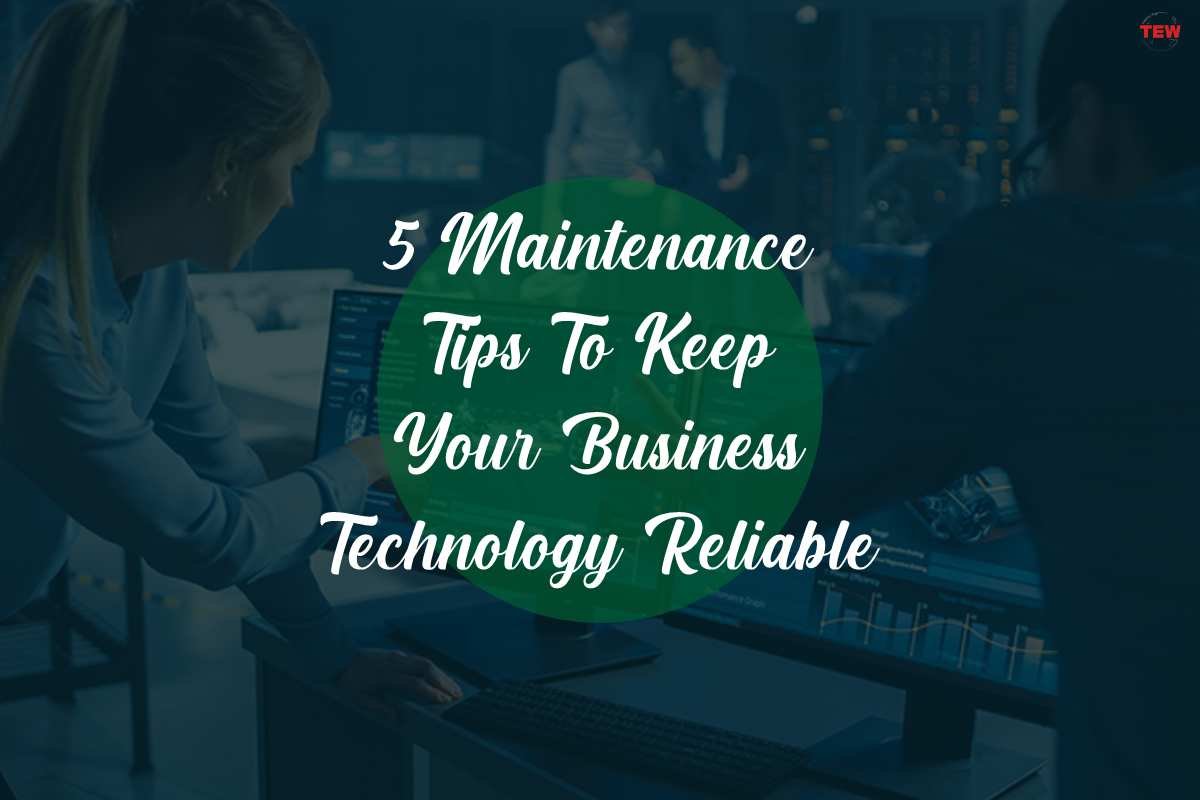Many small businesses struggle with keeping their costs down, so IT maintenance is often on the back burner. However, routine maintenance can keep your costs down and ensure that your business technology is running smoothly. Networks, systems, and hardware that are in top condition directly contribute to increased uptime, higher production quality, and more efficient output covering your business tech.
If you want to keep your business technology reliable, here are five maintenance tips to remember:
1. Hire An IT Support Provider
If you’re not comfortable performing routine maintenance on your network and systems on your own, find qualified and experienced experts to do the work for you. An IT support Boston provider, for instance, can conduct proactive maintenance, apply security patches and updates, as well as perform risk analyses to ensure your tech is in optimal condition.
Here are some of the top reasons to outsource your IT support needs:
- Outsourcing allows you to free up your internal resources and focus on what you do best.
- In some cases, outsourcing costs less than hiring an in-house team, especially if you’re only paying for the maintenance services.
- Outsourced IT support teams are typically available 24/7 to answer your concerns. They can also provide immediate assistance during emergencies.
- They offer access to the latest tools that can help your systems perform their best, so you don’t have to make that costly investment.
2. Perform Routine Network Assessments
Before coming up with an effective preventive maintenance strategy, evaluate the current state of your business technology. A big-picture view of your infrastructure will help you identify your tech’s strengths and weaknesses, which will help you decide which areas to focus on.
Check out the following steps to stay on top of your maintenance requirements:
- Establish a schedule. There are some maintenance tasks that you may need to do daily, weekly, or monthly. How frequently each task needs to be done depends on its importance to your operations.
- Automate some tasks to save time. For instance, some software updates can be done automatically, so you know you’re always using the latest version.
- Monitoring should be an essential aspect of your maintenance routine. This will help you determine if you need to make updates or upgrades.
Just remember that your first maintenance plan is unlikely to be your last. As you perform routine assessments, some parts may not work or respond as expected. Don’t hesitate to make changes—proper maintenance work also involves actively adapting to the needs of your infrastructure.
3. Check Your Hardware
It’s not just your software and systems that you have to worry about. If you want your hardware to last, make sure that you check them at least once a year. Routine maintenance won’t just help them last longer, but it’ll also help them run more efficiently.
If there are any signs of heating or electrical issues, call a specialist right away. For instance, if your computers start slowing or shutting down on their own after only several hours of work, that’s a sign of a heating problem. On the other hand, if you’re getting shocked when you’re touching the computer or if their screens are showing static-like distortions, you’re probably dealing with an electrical issue.
4. Conduct Employee Training
To keep your tech from breaking down in the first place, you need to change your staff’s collective mindset. Train and encourage your executives and employees to take better care of their devices. Ensure that they’re only downloading trusted and authorized programs, changing their passwords regularly, and observing other similar measures. Automating HR process may help you for this.
Educating your team may require a significant investment, especially at the beginning, but it’ll also lead to better business technology practices across the board. After the initial training, email routine reminders so they won’t forget to take care of their equipment.
5. Document Everything
Documentation is a crucial component of any maintenance plan. Make sure that you’re documenting everything—from the present state of your infrastructure to your new maintenance plan and the steps you take in pursuit of that plan. Keep records of maintenance logs, checks, and schedules.
Proper and up-to-date documentation allows you to:
- Track your efforts
- Create a record and resource for any subsequent changes and amendments you may make to your maintenance plan
- Provide your employees with a resource that they can easily access and study in case there are conflicts or questions
Conclusion
Maintaining your business technology offers short- and long-term benefits. Regular maintenance helps improve both productivity and efficiency as well as streamline your operations. It can also help detect irregularities in your system and prevent them from becoming bigger problems later on.
The tips above are just some of the measures you can use to keep your tech in top shape. As you create your maintenance plan, you’ll realize that there may be some maintenance steps that are unique to your system or organization. That’s perfectly fine—a flexible approach to maintenance means you can actively respond to any changes or developments in your organization’s needs.





